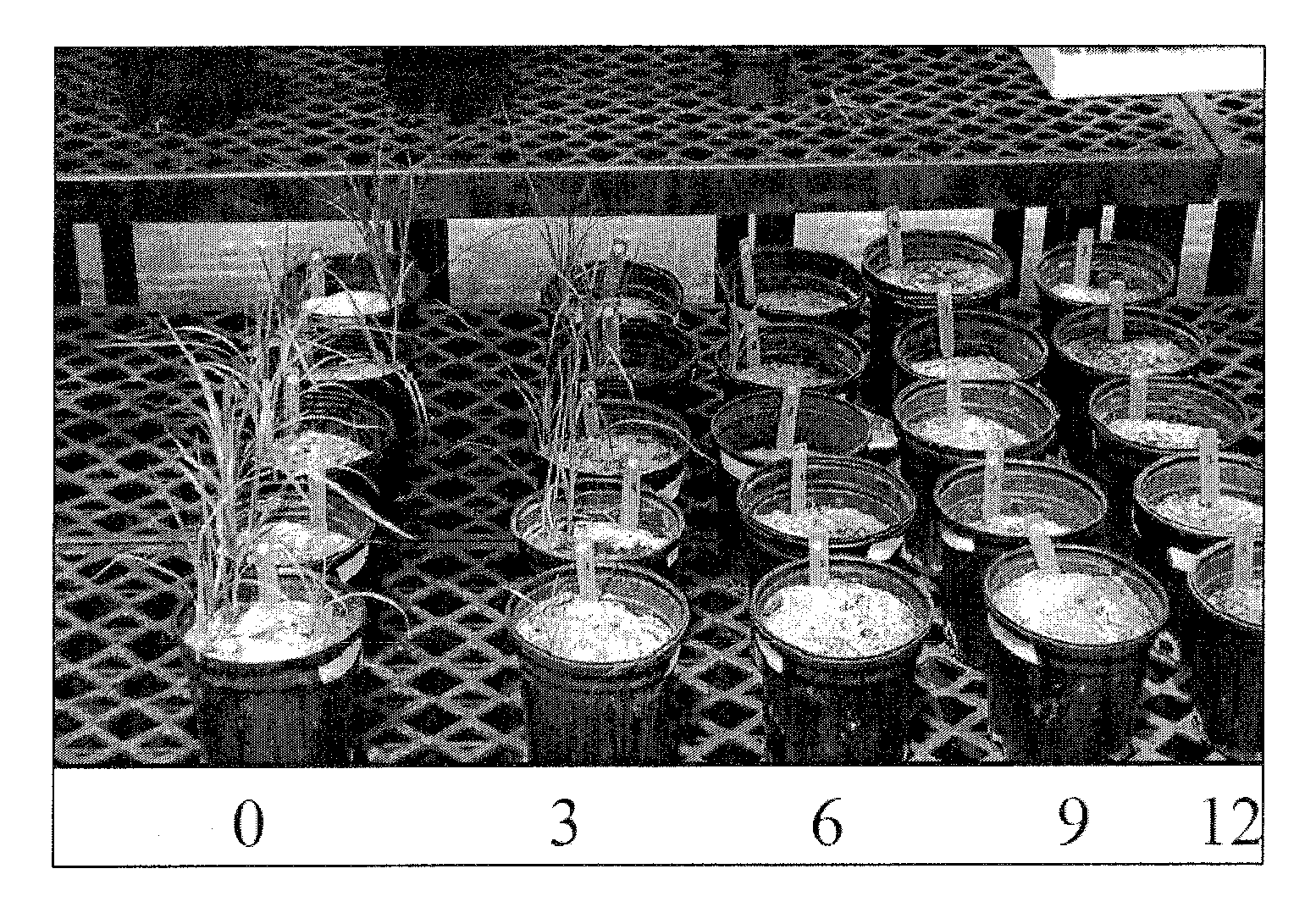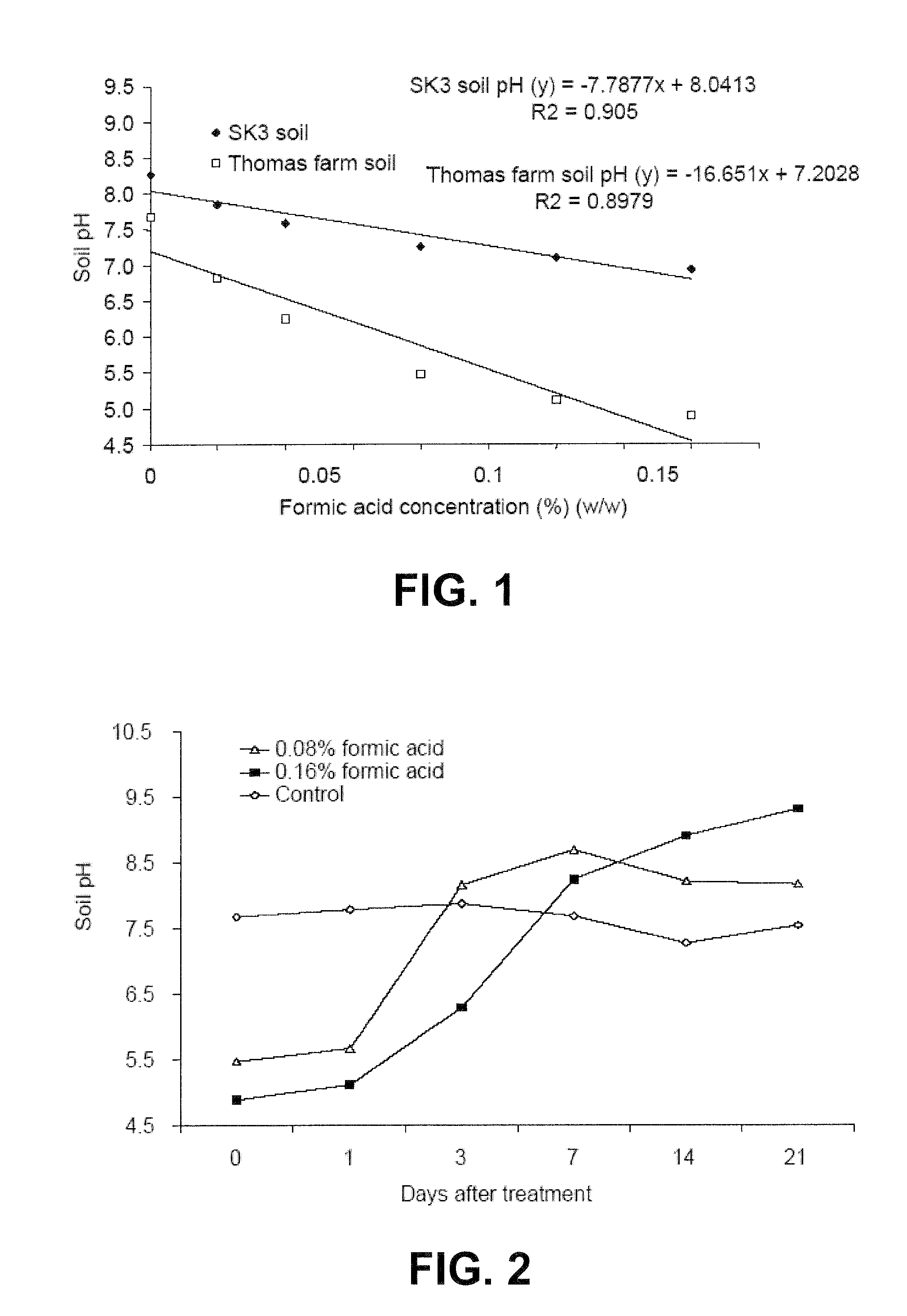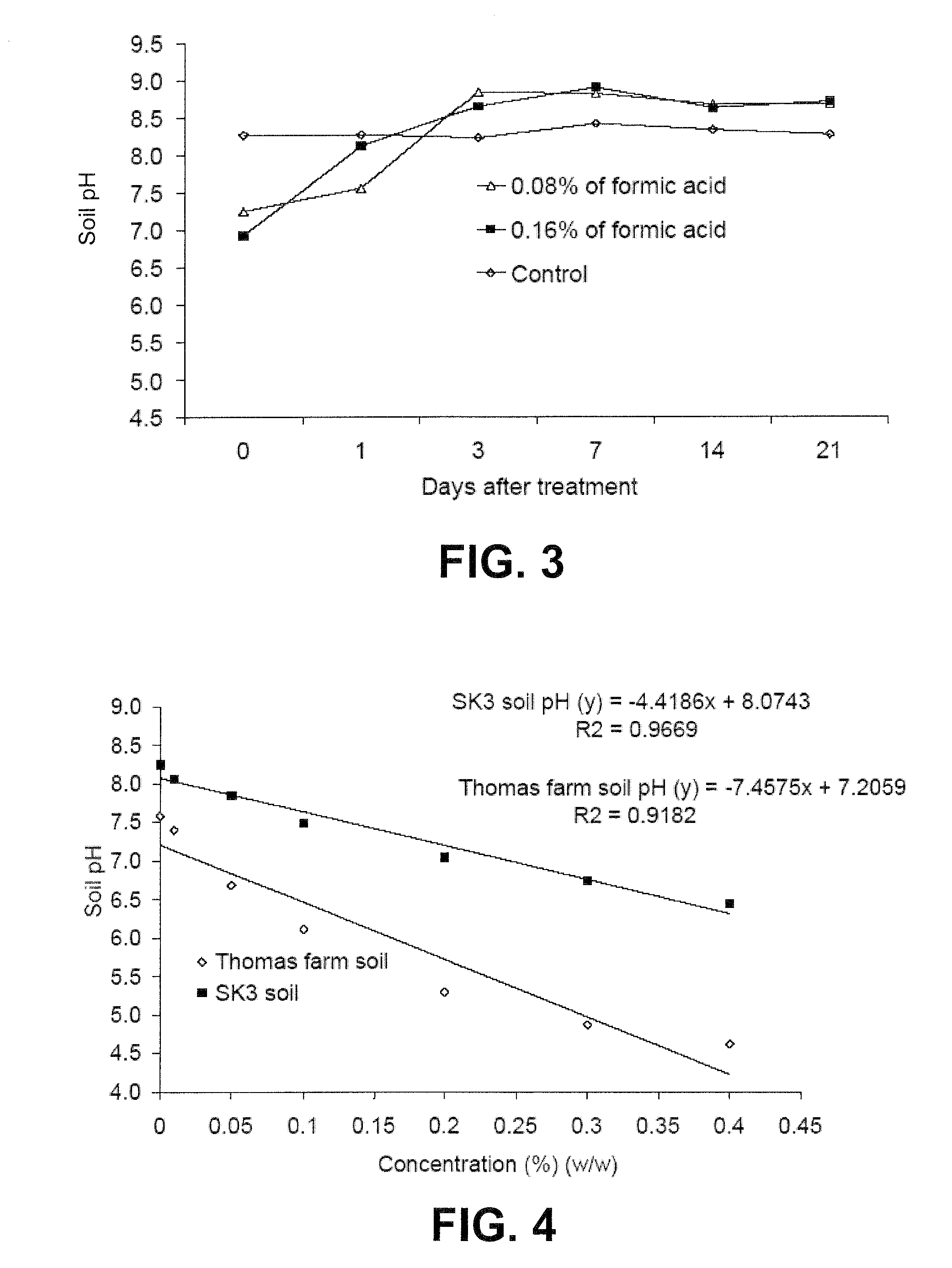Materials and Methods for Pest Control
a technology of pest control and materials, applied in the field of materials and methods for pest control, can solve the problems of root problems, reducing yield, growth rate problems, billions of dollars in losses, etc., and achieve the effect of reducing phytophthora blight of peppers and suppressing phytophthora
- Summary
- Abstract
- Description
- Claims
- Application Information
AI Technical Summary
Benefits of technology
Problems solved by technology
Method used
Image
Examples
example 1
Effects of Formic and Citric Acid on pH Changes of Major Soil Types in South Florida
[0070]The optimal ratio of formic acid and citric acid and the application rate of SPK (best combination of formic and citric acid) for different type of soils were evaluated. The soils used in this study are Nettle sand from Thomas Produce farm (sandy, siliceous, hyperthermic, ortstein Alfic Arenic Haplaquods); Riviera sand from SK3 farm (loamy siliceous, hyperthermic, Arenic Glossaqualfs). The latter is calcareous, with much greater buffering capacity for pH change than the former soil type. Formic acid, citric acid or mixtures of both were incubated in the soil and soil pH changes were measured with time and rate.
[0071]It was observed that soil pH decreased linearly with the application rate of formic acid, but the change rate (slope of the regression line) varied significantly between the two soils (FIG. 1). Soil with small buffering capacity, such as Nettle sand from Thomas farm, had more pH dec...
example 2
Composition
[0074]A pesticidal formula was prepared having the ingredients as shown below:
TABLE 2A formula of the pesticide compositionIngredientsConcentrationFormic acid25% v / vCitric acid20% w / v
[0075]In the following examples, SPK was prepared in water according to Example 2.
example 3
A Nylon Membrane Bag Assay for Determination of the Effect of Chemicals on Soilborne Plant Pathogens in Soil
[0076]The effects of four chemicals (acetic acid, benomyl, streptomycin sulfate, and SPK) on three soilborne pathogens (Streptomyces scabies, Ralstonia solanacearum, and Fusarium oxysporum f. sp. lycopersici) were tested using a nylon membrane bag (NMB) assay.
Materials and Methods
[0077]Soils. Soil was collected from a 0-15 cm depth from a commercial potato field in Ontario, Canada (site G) and from a vegetable field in St. Lucie County, Fla. USA (site F). Site G soil was a sandy loam with a pH of 7.1 and organic carbon content of 1.2%. Site F soil was sandy, siliceous, hyperthermic, Arenic, and Glossaqualf with a pH of 7.6 and organic carbon content of 9.06 g kg−1 soil. Soils were air-dried, passed through a 2-mm sieve, and stored at room temperature (24° C.) prior to use. The water content of the soils was adjusted to 10% by adding deionized water before the soils were treate...
PUM
| Property | Measurement | Unit |
|---|---|---|
| Fraction | aaaaa | aaaaa |
| Fraction | aaaaa | aaaaa |
| Fraction | aaaaa | aaaaa |
Abstract
Description
Claims
Application Information
 Login to View More
Login to View More - R&D
- Intellectual Property
- Life Sciences
- Materials
- Tech Scout
- Unparalleled Data Quality
- Higher Quality Content
- 60% Fewer Hallucinations
Browse by: Latest US Patents, China's latest patents, Technical Efficacy Thesaurus, Application Domain, Technology Topic, Popular Technical Reports.
© 2025 PatSnap. All rights reserved.Legal|Privacy policy|Modern Slavery Act Transparency Statement|Sitemap|About US| Contact US: help@patsnap.com



